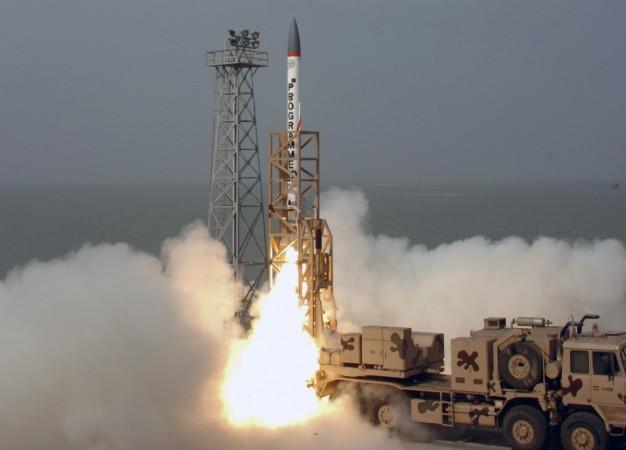
India on Saturday successfully test-fired its interceptor missile from Abdul Kalam Island (Wheeler Island) off the Odisha coast. This launch is an important milestone towards developing a two-layered Ballistic Missile Defence system.
An official from the Defence Research Development Organisation (DRDO) told the Press Trust of India that this mission, which is called the PDV mission," is for engaging the targets in the exo-atmosphere region at an altitude above 50 km of earth's atmosphere... Both, the PDV interceptor and the two stage target missile, were successfully engaged."
The computer network predicted the trajectory of the incoming ballistic missile using date that was received from radar based detection and tracking system, which detected and tracked the enemy's ballistic missile in an automated operation.
The interceptor missile was launched after the computer network gave commands for lift-off. The interceptor, which is guided by high accuracy Inertial Navigation System (INS) supported by a Redundant Micro Navigation System, then moved towards the estimated point of interception, PTI reported.
The Heat Shield ejected after the missile crossed the atmosphere while the IR Seeker dome opened to look at the Target location and then moved for interception using the Inertial Guidance. Everything was monitored by the Telemetry/Range Stations at various other locations in real-time.









!['Had denied Housefull franchise as they wanted me to wear a bikini': Tia Bajpai on turning down bold scripts [Exclusive]](https://data1.ibtimes.co.in/en/full/806605/had-denied-housefull-franchise-they-wanted-me-wear-bikini-tia-bajpai-turning-down-bold.png?w=220&h=138)



